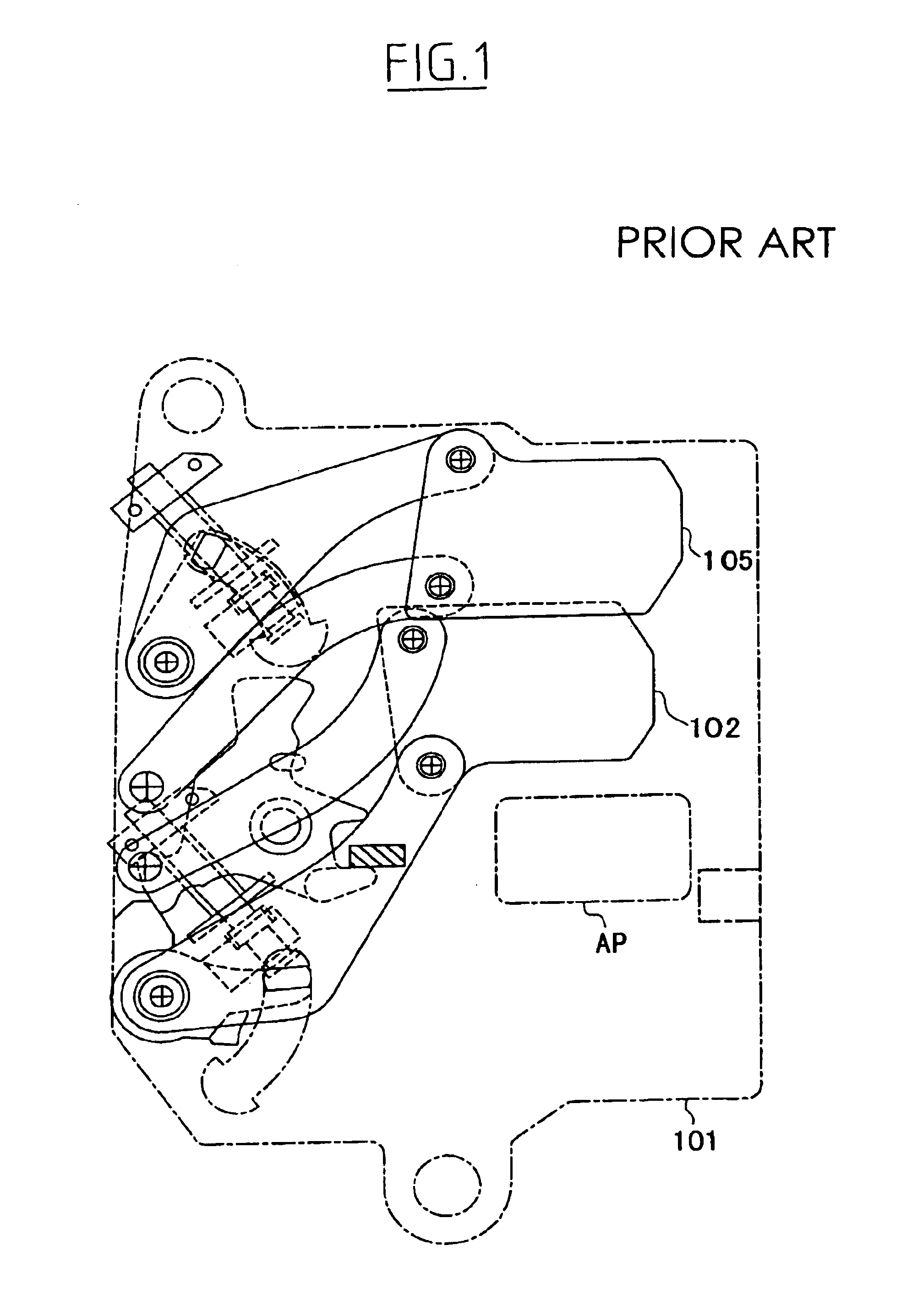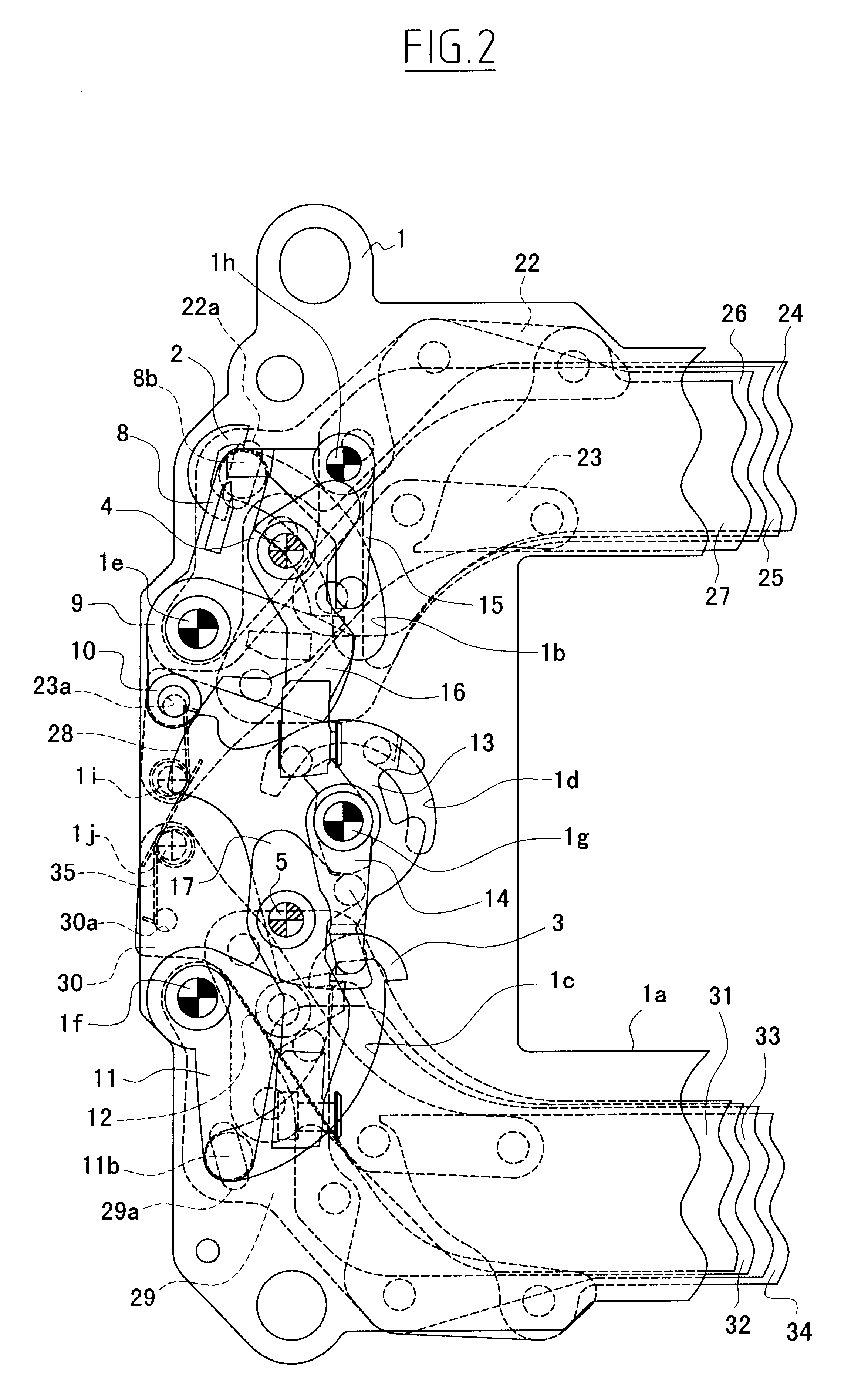Focal-plane shutter for digital still cameras
a shutter and digital still technology, applied in the field of optical plane shutters for digital still cameras, can solve the problems of reducing the possibility of using this shutter unit, affecting the design freedom of the camera, and unable to provide a proper slit for making proper exposure, etc., to achieve the effect of compact design and favorable application
- Summary
- Abstract
- Description
- Claims
- Application Information
AI Technical Summary
Benefits of technology
Problems solved by technology
Method used
Image
Examples
Embodiment Construction
The present invention is applicable to the focal-plane shutter of either the direct type or the locking type and is such that each of the first blade and the second blade can be constructed with a single blade component or a plurality of blade components. The embodiment is the focal-plane shutter of the locking type, in which each of the first blade and the second blade is constructed with a plurality of blade components. The structure of the embodiment is first described below, chiefly using FIGS. 2 and 3. In the following description, the object side of individual members is conveniently referred to as a surface side, and an image sensor (such as a CCD) side as a back side.
As shown in FIG. 2, a shutter base plate 1 is provided with an aperture 1a of a rectangle elongated in a lateral direction at about the middle thereof. Since, as mentioned above, FIG. 2 depicts parts of the shutter on the left side thereof, viewed from the object side, the aperture 1a is also depicted as a part ...
PUM
 Login to View More
Login to View More Abstract
Description
Claims
Application Information
 Login to View More
Login to View More - R&D
- Intellectual Property
- Life Sciences
- Materials
- Tech Scout
- Unparalleled Data Quality
- Higher Quality Content
- 60% Fewer Hallucinations
Browse by: Latest US Patents, China's latest patents, Technical Efficacy Thesaurus, Application Domain, Technology Topic, Popular Technical Reports.
© 2025 PatSnap. All rights reserved.Legal|Privacy policy|Modern Slavery Act Transparency Statement|Sitemap|About US| Contact US: help@patsnap.com



